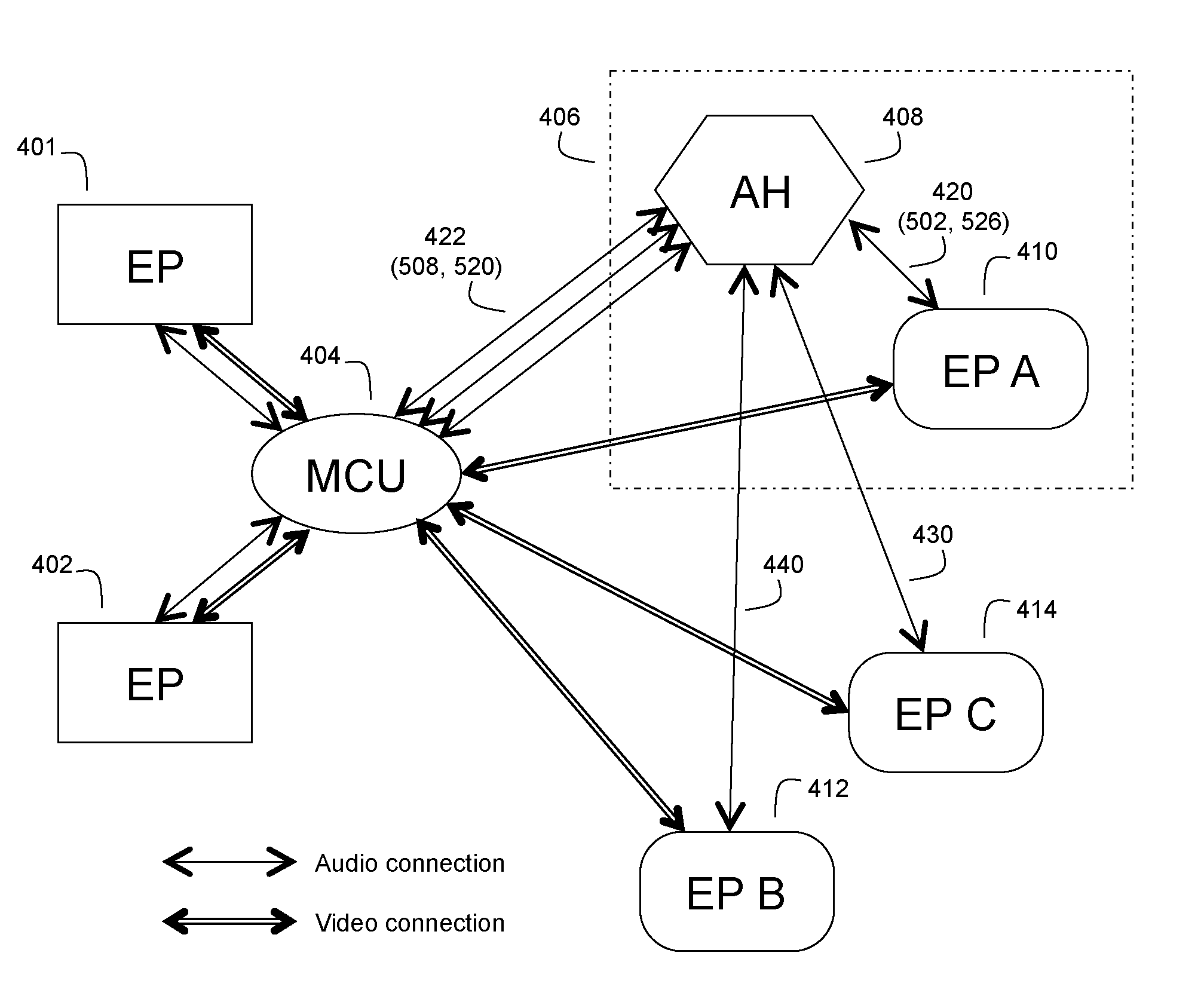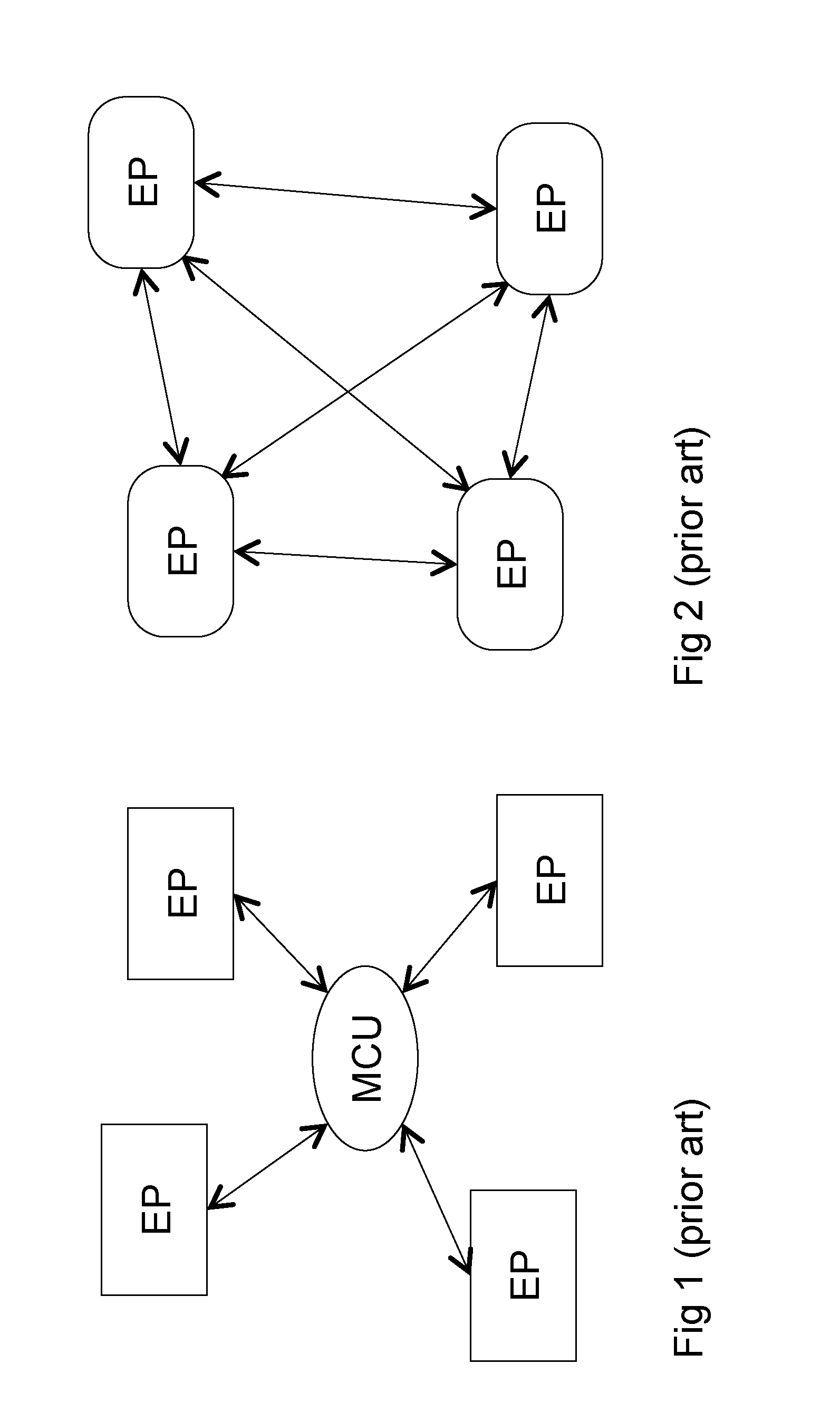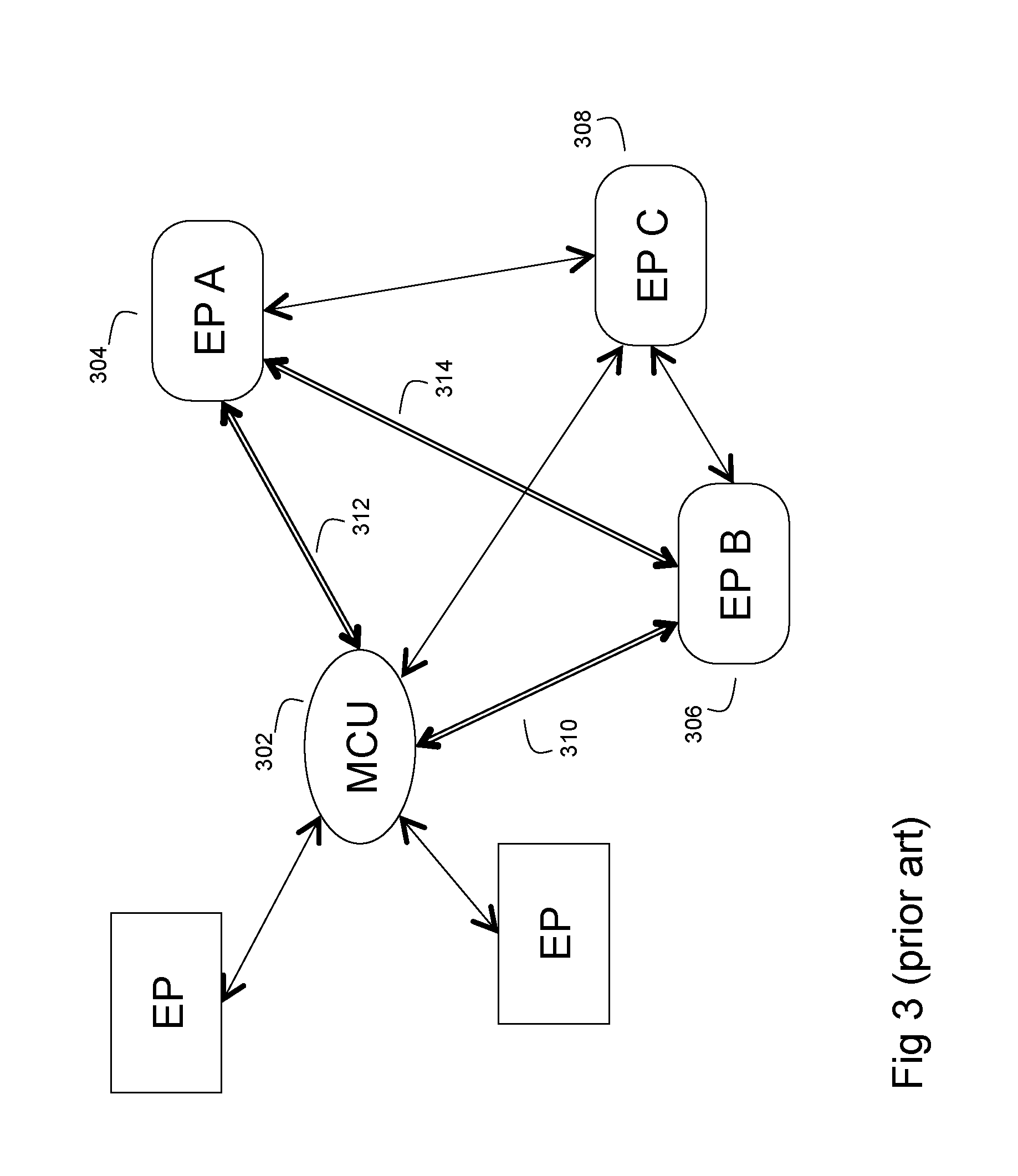Method of Connecting Mesh-Topology Video Sessions to a Standard Video Conference Mixer
a video conference mixer and meshtopology technology, applied in the field of video conferencing, can solve problems such as inability to receive multiple video streams, unusable audio experience, and undesirable user configurations, and achieve the effect of reducing the number of endpoints that cannot receive multiple video streams
- Summary
- Abstract
- Description
- Claims
- Application Information
AI Technical Summary
Benefits of technology
Problems solved by technology
Method used
Image
Examples
Embodiment Construction
[0025]Referring to FIG. 4, the mesh connections have been omitted for clarity. The mesh connections consist of direct bidirectional audio channels and video channels between the endpoints on the mesh network, namely EP A 410, EP B 412, and EP C 414.
[0026]The audio hub (AH) 408 has one bidirectional audio connection to the MCU 404 for each mesh participant. For example, connection 422 is the connection associated with EPA 410. The role of the audio hub 408 is to produce a single audio stream from the mesh endpoints 410, 412, 414 for input to the multipoint control unit (MCU) 404. In one embodiment, the AH 408 detects the loudest speaker and uses this audio as an input to the MCU 404.
[0027]As the AH detects, in one embodiment, that participant A is the loudest speaker it provides the audio from the mesh participant, connection 420, on the MCU audio stream 422 from A. This can be any known audio conferencing method e.g. just the audio from A or alternatively, a mix of all the participa...
PUM
 Login to View More
Login to View More Abstract
Description
Claims
Application Information
 Login to View More
Login to View More - R&D
- Intellectual Property
- Life Sciences
- Materials
- Tech Scout
- Unparalleled Data Quality
- Higher Quality Content
- 60% Fewer Hallucinations
Browse by: Latest US Patents, China's latest patents, Technical Efficacy Thesaurus, Application Domain, Technology Topic, Popular Technical Reports.
© 2025 PatSnap. All rights reserved.Legal|Privacy policy|Modern Slavery Act Transparency Statement|Sitemap|About US| Contact US: help@patsnap.com



